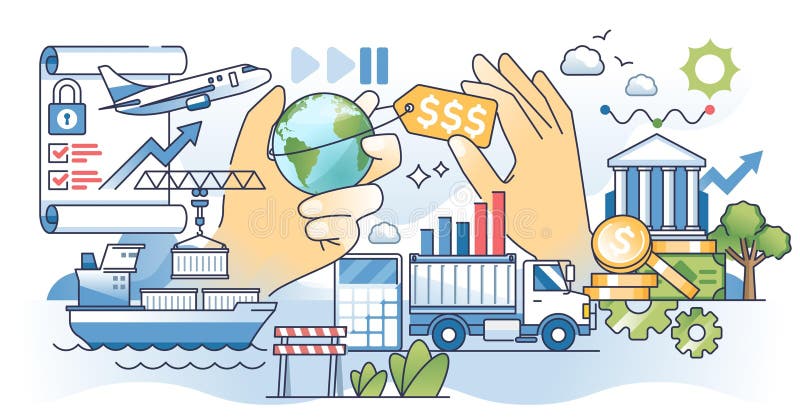Global Trade And Tariffs: A G7 Perspective

Table of Contents
The G7, comprising Canada, France, Germany, Italy, Japan, the United Kingdom, and the United States, represents a significant portion of the global economy. Their collective decisions on trade policies profoundly affect international markets and the global trading system. This analysis aims to dissect the G7's stance on global trade and tariffs, exploring their historical commitments, the economic impacts of tariffs on their economies, their mechanisms for resolving trade disputes, and the future outlook for global trade within the G7 context.
The G7's Stance on Free Trade
Historically, G7 nations have largely championed free trade agreements, advocating for the reduction of barriers to international commerce. The belief was that free trade fosters economic growth, creates jobs, and increases consumer choice. However, the reality is more nuanced. While supporting free trade in principle, the level of commitment varies among member nations.
- Examples of successful free trade agreements involving G7 members: The North American Free Trade Agreement (NAFTA), now replaced by the USMCA, is a prime example. Similar successes include various bilateral agreements between G7 members, promoting seamless trade within the group.
- Instances of protectionist measures adopted by G7 nations and their justifications: Despite a general commitment to free trade, G7 nations have at times resorted to protectionist measures, often citing national security concerns, the need to protect domestic industries, or the prevention of unfair trade practices (e.g., dumping). These actions often lead to retaliatory tariffs from other nations, escalating trade tensions.
- The role of international organizations (WTO) in shaping G7 trade policies: The World Trade Organization (WTO) plays a crucial role in setting the rules for global trade and providing a forum for dispute resolution. G7 nations, being major players in the WTO, significantly influence its decisions and policies. However, the WTO's effectiveness has been challenged in recent years due to rising protectionist sentiments.
Impact of Tariffs on G7 Economies
Tariffs, while intended to protect domestic industries, have multifaceted economic consequences. The impact varies significantly across sectors and G7 nations.
- Case studies of tariffs imposed by G7 countries and their impact on GDP growth: Imposing tariffs can lead to reduced imports, potentially benefiting domestic producers in the short term. However, this can also lead to higher prices for consumers, reduced competition, and slower overall economic growth. Specific case studies analyzing the effects of specific tariffs on GDP growth within G7 nations are needed to fully understand the impact.
- Discussion of job creation/loss due to tariff policies: The impact on employment is complex. While tariffs may protect certain jobs in targeted industries, they can also lead to job losses in other sectors dependent on imports or exports. A comprehensive assessment considering both job creation and destruction is necessary.
- Analysis of consumer price changes resulting from tariffs: Tariffs inevitably lead to higher prices for consumers, as imported goods become more expensive. This can disproportionately affect lower-income households, reducing their purchasing power.
Navigating Trade Disputes within the G7
Trade disputes between G7 members are inevitable given their economic size and diverse interests. However, the G7 has established mechanisms to resolve such disputes.
- Examples of recent trade disputes within the G7: Recent years have witnessed several trade disputes among G7 members, often concerning specific sectors like agriculture or technology. Analyzing these disputes reveals the challenges of balancing national interests with the collective goals of maintaining a stable global trading system.
- Analysis of the effectiveness of dispute resolution mechanisms: The effectiveness of existing dispute resolution mechanisms varies. Diplomacy and negotiation often play a crucial role, but successful outcomes are not always guaranteed. The potential for arbitration or litigation through the WTO also exists, but this process can be lengthy and complex.
- Potential for future trade conflicts and strategies for prevention: The likelihood of future trade conflicts remains high. Proactive strategies focusing on clear communication, robust dispute resolution mechanisms, and a commitment to multilateral cooperation are essential for preventing escalations and fostering a more stable global trading environment.
The Future of Global Trade and Tariffs: A G7 Perspective
The global trade landscape is constantly evolving, presenting both challenges and opportunities for the G7.
- The influence of emerging economies on G7 trade policies: The rise of emerging economies is reshaping global trade dynamics, influencing G7 trade policies and necessitating adaptations to maintain competitiveness.
- The impact of technological advancements on global trade: Technological advancements, such as e-commerce and digital trade, are transforming global trade, requiring the G7 to adapt its regulations and policies to this evolving landscape.
- Potential for future reforms in global trade governance: Reforms in global trade governance, focusing on greater transparency, inclusivity, and effectiveness, are essential for addressing the challenges of the 21st century. The G7 has a crucial role to play in shaping these reforms.
Conclusion: Understanding Global Trade and Tariffs from a G7 Perspective
Understanding the G7's approach to global trade and tariffs is crucial for comprehending the dynamics of the global economy. While the G7 generally supports free trade, protectionist measures and trade disputes remain a reality. The economic consequences of tariffs are complex, affecting different sectors and nations differently. Effective mechanisms for resolving trade disputes are vital, and proactive strategies are necessary to prevent future conflicts. The evolving global landscape, marked by emerging economies and technological advancements, demands continuous adaptation and reform in global trade governance. To deepen your knowledge of Global Trade and Tariffs, explore resources from the WTO, OECD, and various think tanks focusing on international trade policy. Subscribe to our updates for further insights on this critical topic.

Featured Posts
-
 George Russell Praised For His Calming Influence And Confident Leadership At Mercedes
May 25, 2025
George Russell Praised For His Calming Influence And Confident Leadership At Mercedes
May 25, 2025 -
 Thunderstorms Trigger Flash Flood Warning In Bradford And Wyoming Counties
May 25, 2025
Thunderstorms Trigger Flash Flood Warning In Bradford And Wyoming Counties
May 25, 2025 -
 La Vida D Albert De Monaco Despres De La Separacio De Charlene
May 25, 2025
La Vida D Albert De Monaco Despres De La Separacio De Charlene
May 25, 2025 -
 Urgent Flash Flood Warning For Bradford And Wyoming Counties Due To Severe Thunderstorms
May 25, 2025
Urgent Flash Flood Warning For Bradford And Wyoming Counties Due To Severe Thunderstorms
May 25, 2025 -
 Flood Advisory In Effect Miami Valley Faces Severe Weather Threat
May 25, 2025
Flood Advisory In Effect Miami Valley Faces Severe Weather Threat
May 25, 2025
